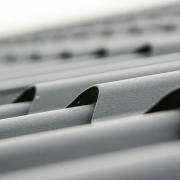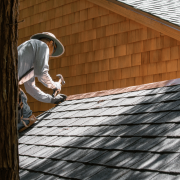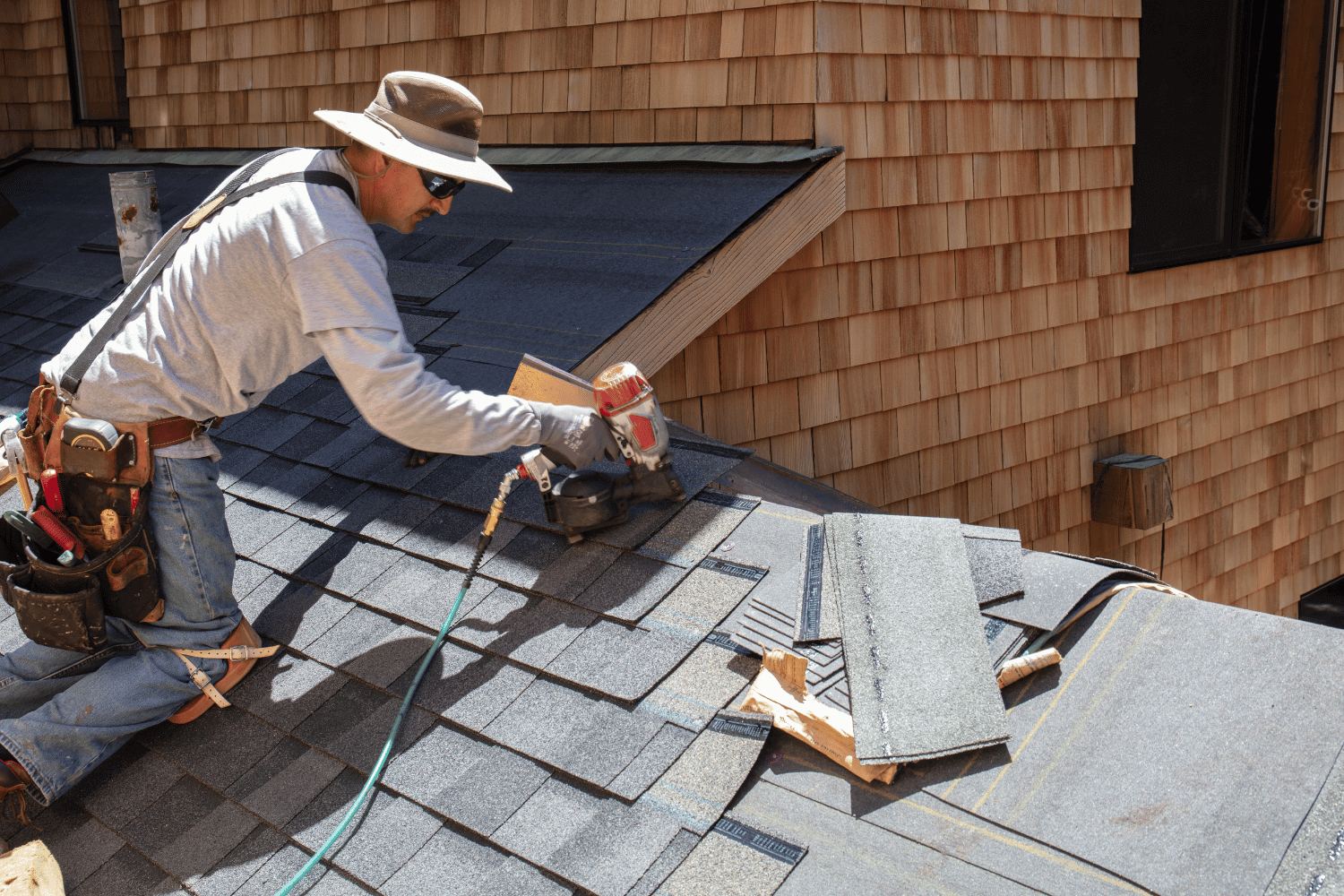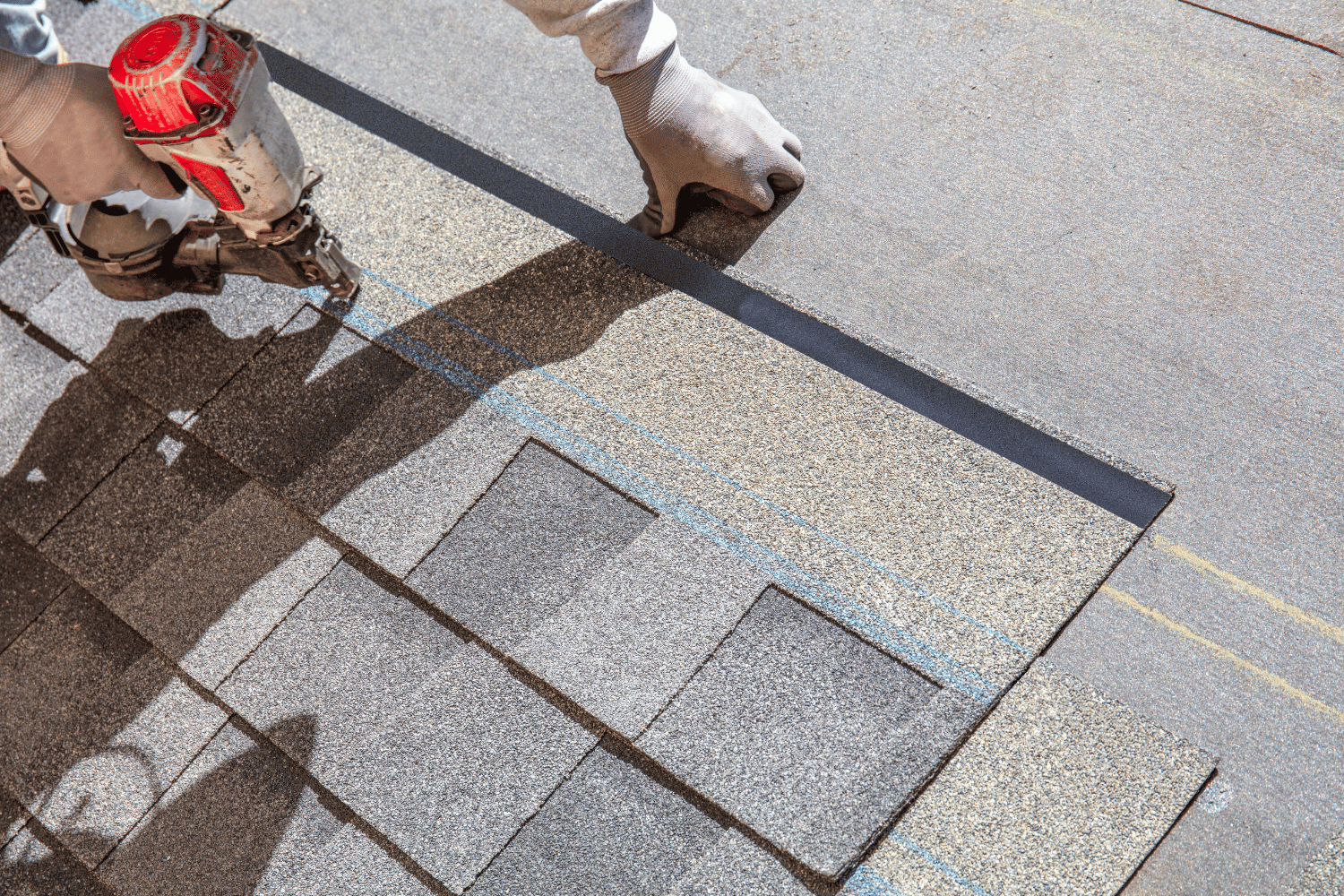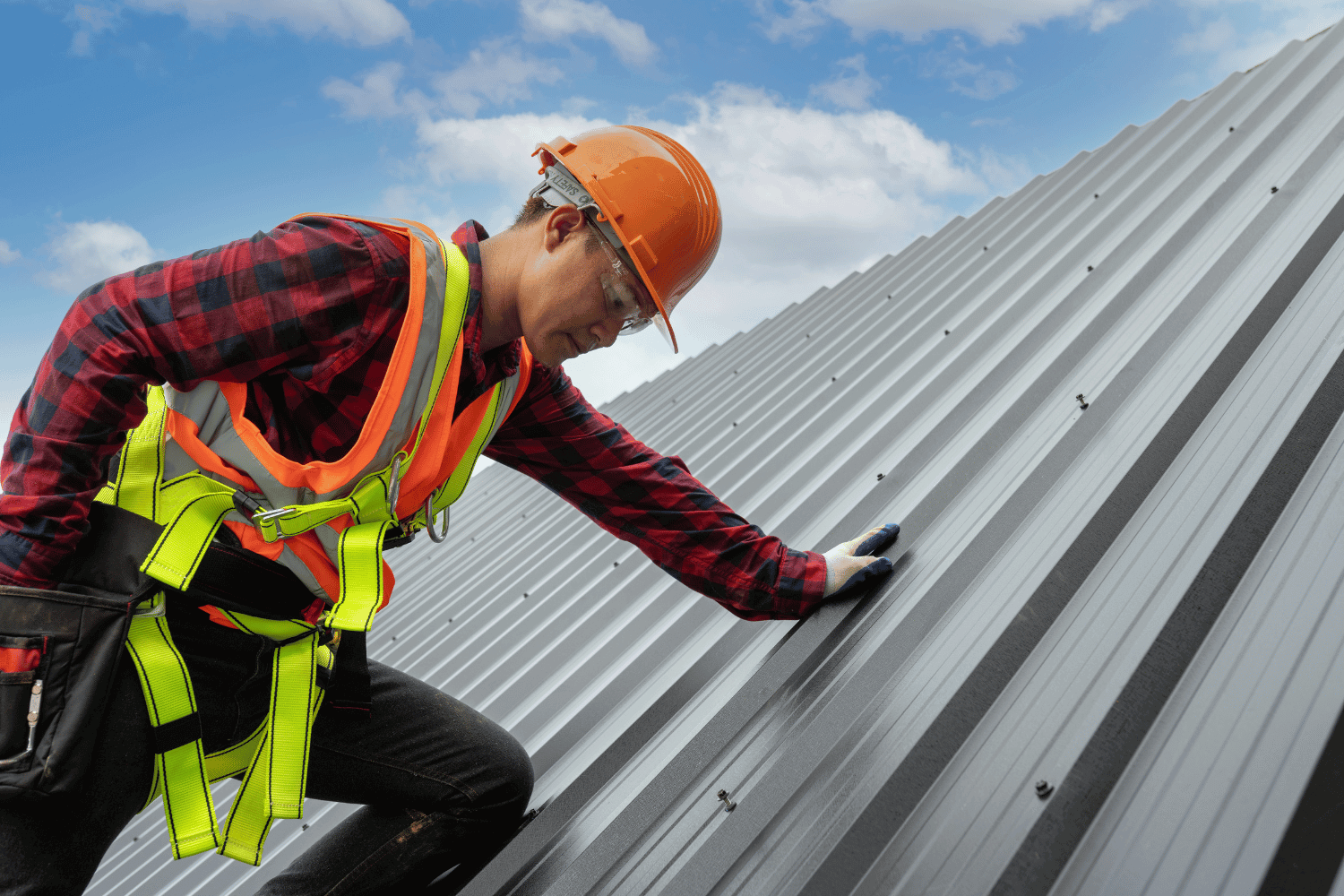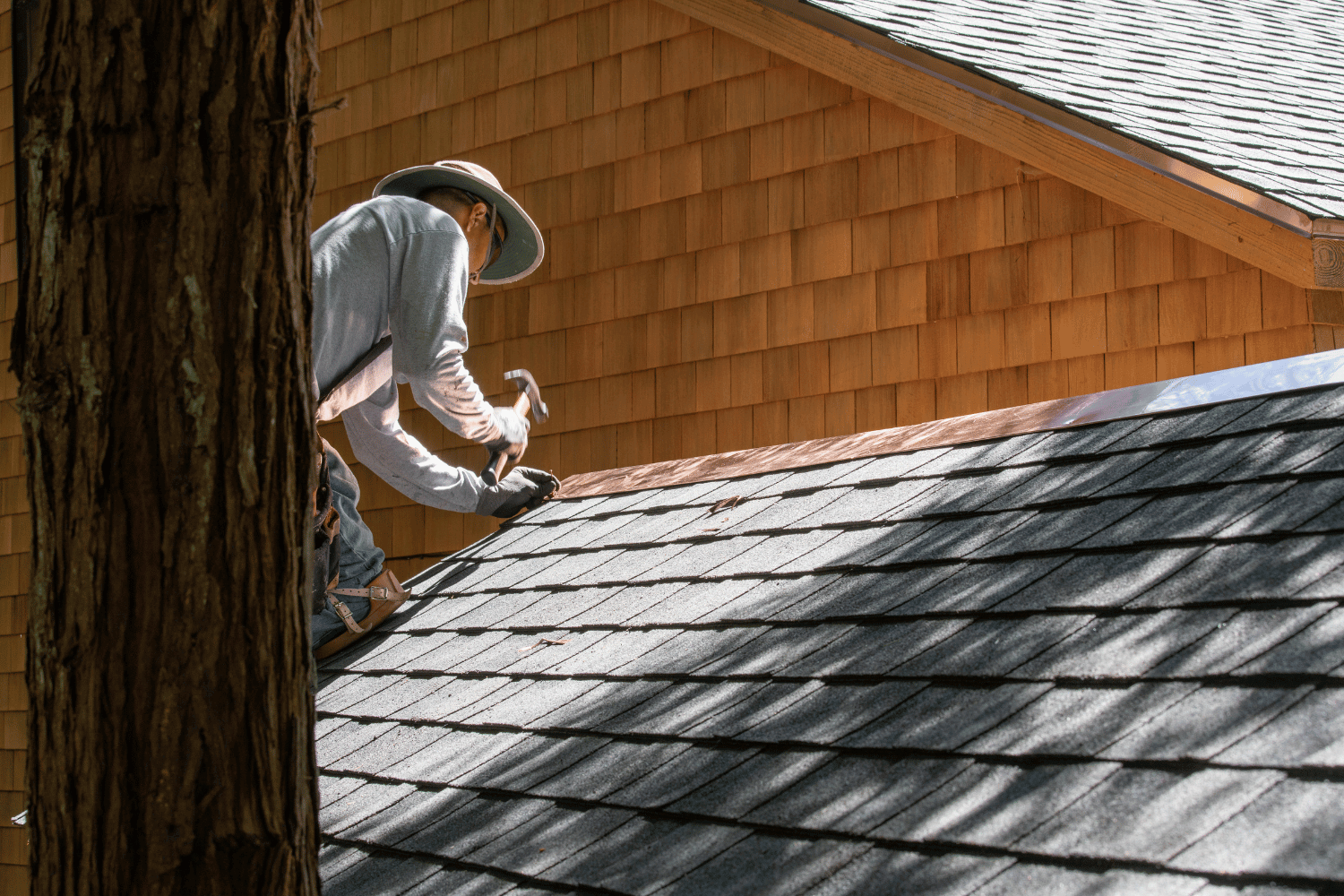How Often Should You Get A New Roof?
Your roof is one of the most critical components of your home’s protection, especially in climates like Iowa and Nebraska, where hailstorms, high winds, snow, and seasonal temperature swings are a constant challenge. But how do you know when it’s time for a new roof?
This guide breaks down roof lifespan by material, highlights regional factors that shorten roof life, and provides clear signs that it might be time to replace your roof—plus what you can expect from a professional inspection.
How Often Should You Get a New Roof: Key Takeaways
- Asphalt shingles last 15–25 years; metal, tile, and slate last longer
- Harsh Midwest weather can reduce roof life by several years
- Regular inspections help catch problems early
- Visible damage, leaks, and granule loss are red flags
- Certified roofers ensure proper replacement and long-term value
Introduction: Understanding the Need for a New Roof
For most homeowners, a roof replacement is one of the most significant investments they’ll make in their property. The need to replace your roof isn’t just about aesthetics—it’s about protecting your home from the elements and ensuring the safety of everyone inside. The life expectancy of your roof depends on the roofing material used, the quality of installation, and how well you keep up with regular inspections and maintenance. Over time, even the best roofs will need to be replaced as they reach the end of their lifespan. By understanding the key signs that a roof needs to be replaced and staying proactive with regular inspections, homeowners can avoid unexpected repairs and make informed decisions about when it’s time for a new roof.
Roof Lifespan by Material Type
The frequency of roof replacement depends heavily on the material and the age of your roof. The date your roof was originally installed is crucial for determining its remaining lifespan.
- Asphalt Shingles: 15–25 years (most common in Iowa and Nebraska). Asphalt roof shingles are made with crushed stone granules, which provide fire resistance and help indicate wear as granules appear in gutters.
- Architectural Shingles: 20–30 years. These have a different expected lifespan and average lifespan compared to standard asphalt shingles.
- Metal Roofing: 40–70 years. Metal roofs have a longer life span and expected lifespan than most other materials.
- Tile or Slate: 50+ years. Slate tiles are known for their exceptional durability and longevity, often requiring little maintenance over a long period.
- EPDM and Flat Roofs: 20–35 years (typical for commercial properties). Each material has a different expected lifespan and average lifespan, which are important for planning when your roof may need to be roof replaced.
- Composite Shingles: These can mimic the look of traditional materials like slate and cedar shakes, and offer different lifespans depending on the product.
When considering roof replacement, always take into account the age of your current roof and when it was installed, as roofs approaching or exceeding their expected lifespan may need to be roof replaced. Other factors, such as installation quality and local climate, can also affect the life span and expected lifespan of your roof.
Over a long period, wear and tear from weather and environmental exposure can gradually lead to the end of its lifespan, making replacement necessary.
While manufacturers provide these estimates, they assume ideal conditions. Midwest homeowners must factor in hail, wind, and moisture, which can shorten a roof’s lifespan by several years.
Asphalt Roofs: Benefits and Drawbacks
Asphalt shingles are the go-to roofing material for many homeowners thanks to their affordability, versatility, and wide range of design options. They’re easy to install and can complement almost any home style, making them a popular choice across the country. However, asphalt roofs do have some limitations. Their lifespan typically ranges from 15 to 20 years, and they can be vulnerable to extreme weather, which may lead to damaged shingles or the need for more frequent repairs. For those seeking greater durability, luxury shingles offer a thicker, more robust option with a longer lifespan—sometimes up to 30 years. When considering asphalt shingles, it’s important to weigh the initial cost savings against the potential for more frequent replacements and repairs, especially in areas prone to harsh weather.
Metal Roofs: Durability and Advantages
Metal roofs are renowned for their exceptional durability and long lifespan, often lasting 30 to 50 years or more with minimal maintenance. These roofs stand up well to extreme weather, including high winds, hail, and heavy snow, making them a smart investment for homeowners seeking long-term protection. Metal roofs are also energy efficient, reflecting sunlight to help keep your home cooler in the summer and reducing energy costs. Additionally, many metal roofing materials are made from recycled content and are fully recyclable at the end of their life, making them an environmentally friendly choice. While the initial cost of a metal roof can be higher than asphalt, the reduced need for repair and replacement over time can make it a cost-effective solution in the long run.
Climate Impact: Iowa and Nebraska Roof Challenges
In the Midwest, weather is a major factor in how often you need a new roof. Here’s how regional elements impact longevity:
- Hailstorms: Can crack or bruise shingles, leading to water infiltration
- High Winds: May lift shingles and break seal strips
- Ice Dams: Freeze-thaw cycles can cause roof deck damage
- UV Radiation: Summer sun can dry out and curl asphalt shingles
Storm damage, such as high winds and hail, can cause missing shingles, curled shingles, and even tear roofing materials. It’s important to inspect for algae growth, dark spots, and mold, as these can indicate moisture problems. Check the attic for damp rafters, which may signal water intrusion. Inspect roof valleys, especially the v shaped metal channel, for rusted roof valleys or other issues that can lead to leaks. Keep gutters clear to prevent water damage to the house. Homeowners should roof regularly inspect their roofs and spot signs of damage to prevent long-term issues.
These conditions make annual inspections especially important for homeowners in Des Moines, Ames, Story City, Omaha, and Lincoln.
Signs You May Need a Roof Replacement
Knowing when to schedule a replacement can help prevent costly structural repairs. Look for visible signs and signs of damage, such as:
- Missing, cracked, or curling shingles
- Granules collecting in gutters
- Staining on interior ceilings or attic sheathing
- Sagging roofline or visible daylight through the roof boards
- Roof is over 20 years old
- Other visible signs like dark spots, algae growth, or rusted roof valleys
These signs indicate it may be time to replace your roof, especially if your current roof is nearing the end of its lifespan or has exceeded the average lifespan for its material. Wear and tear over time is a common sign that a roof needs to be roof replaced.
A professional inspection by a roofing contractor can help determine if repairing or full replacement is needed. The short answer: if you see these signs, it’s time to replace your roof or at least get a professional assessment.
Damaged Flashing: Why Proper Repair Matters
Flashing is a vital part of your roofing system, designed to channel water away from critical areas like the roof deck, chimneys, and vents. When flashing becomes damaged or deteriorates, it can allow water to seep into your home, leading to leaks, rotting boards, and even structural issues that require costly repairs. Regular inspections are essential for spotting signs of damaged flashing early, such as rust, cracks, or separation from the roof surface. Prompt repair of flashing not only prevents water damage but also extends the life of your roof and helps you avoid more extensive—and expensive—problems down the road. Homeowners should make flashing inspection a routine part of their roof maintenance plan to protect their investment.
Why Inspections Matter
Even if your roof isn’t visibly leaking, damage beneath the surface can lead to major issues. Waddle Exteriors offers free, no-pressure in-home consultations to assess your roof’s condition. A professional inspection by a qualified roofing contractor can help detect problems early, potentially saving you money and preventing further damage.
Our certified crews don’t just look at the shingles—they examine flashing, ventilation, insulation, and attic spaces for signs of hidden damage. Inspections also include checking the flashing around skylights to spot signs of leaks or deterioration. This thorough process helps spot signs of trouble, and often issues can be addressed by repairing specific components rather than replacing the entire roof. This full-system approach ensures the best long-term protection for your home.
Request a Free Roof Inspection
Roof Replacement Benefits: What You Gain with a New Roof
Investing in a roof replacement brings a host of benefits that go beyond simply keeping the rain out. A new roof can significantly improve your home’s energy efficiency, helping to lower utility bills and maintain a comfortable indoor environment. It also boosts curb appeal, making your property more attractive to potential buyers and increasing its overall value. Replacing your roof can give you peace of mind, knowing that your home is protected from leaks and costly repairs for years to come. Many insurance companies also offer discounts to homeowners with new roofs, which can help offset the cost of replacement. Ultimately, a new roof is an investment in your home’s safety, value, and long-term performance.
Choosing the Right Contractor for Roof Replacement
When it’s time to install a new roof, choosing a qualified roofing contractor is just as important as choosing the material. Working with experienced roofing contractors ensures proper installation, timely replacement, and peace of mind that your roof will be maintained by professionals. Waddle Exteriors provides:
- Certified, full-time crews (no subcontractors)
- Roofing systems designed for Midwest weather
- Clear communication throughout the project
- Assistance coordinating with your insurance company (we communicate, not negotiate)
We back our work with strong manufacturer warranties and ongoing support so you can move forward with confidence.
Learn About Our Roofing Services
FAQ: How Often Should You Replace a Roof in Iowa or Nebraska?
How often should I replace an asphalt shingle roof? The short answer: an asphalt roof typically needs to be roof replaced every 15–25 years, depending on storm exposure, material quality, and the expected lifespan of the shingles. Asphalt shingles contain crushed stone granules, which provide fire resistance and indicate wear when found in gutters. Different lifespans apply to various shingle types, such as 3-tab, architectural, and luxury shingles.
Does my metal roof need replacement? Metal roofs have an average lifespan of 40–70 years and often only require minor maintenance. However, the expected lifespan can vary based on installation quality and other factors.
Can hail damage shorten my roof’s life? Yes. Even if the damage isn’t visible, hail can weaken shingles and lead to future leaks. Other factors, such as poor ventilation or improper installation, can also impact how soon your roof needs to be replaced.
How can I extend the life of my roof? Schedule regular inspections, clean gutters, and trim overhanging branches. Regular maintenance and repairing minor issues promptly can delay the time to replace your roof and help maximize its average lifespan.
Is Waddle Exteriors certified to replace my roof? Yes. All crews are certified, trained, and never subcontracted, ensuring top-tier installation. When choosing a roofing contractor or roofing contractors, always verify their qualifications and experience.
What is the lifespan of other roofing materials? Slate tiles and cedar shakes have different lifespans compared to asphalt shingles. Slate tiles can last over 100 years, while cedar shakes and composite shingles also offer long durability, but their expected lifespan varies. Always consider the average lifespan and expected lifespan of your chosen material when planning for maintenance or replacement.
Ready to Plan Your Roof Replacement?
Don’t wait until there’s a leak or damage. Waddle Exteriors provides free inspections to help you understand the current condition of your roof and whether a replacement is needed. We proudly serve communities across Iowa and Nebraska with professionalism, certified workmanship, and weather-ready solutions.
Call (319) 500-4089 or request an estimate today.

